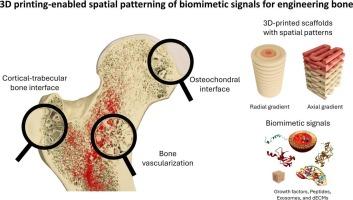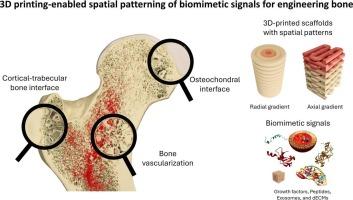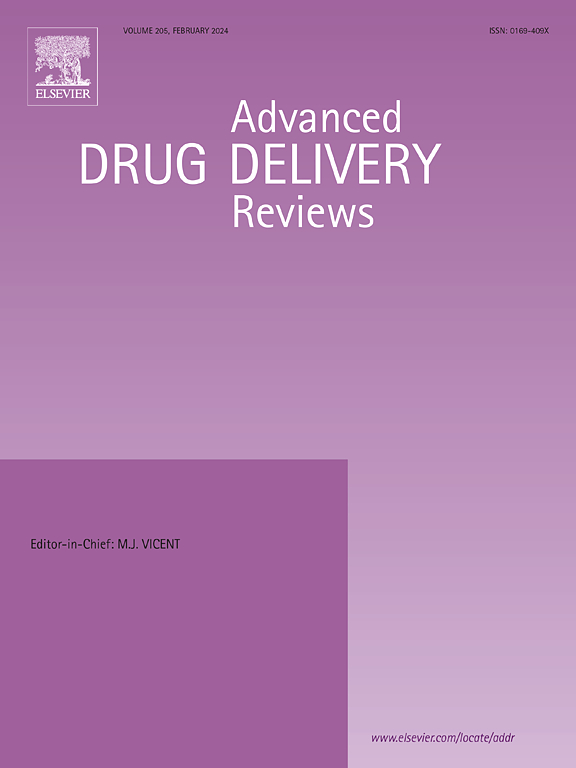3D printing-enabled spatial patterning of biomimetic signals for bone tissue engineering
IF 17.6
1区 医学
Q1 PHARMACOLOGY & PHARMACY
引用次数: 0
Abstract
Over the years, sustained research into the role of biomolecules in bone regeneration has provided valuable insights into their potential as therapeutic agents for tissue growth. However, challenges such as short half-lives and high production costs underscore the need for advanced tissue engineering platforms. Precise spatial delivery of these biomolecules to target sites remains a critical requirement. 3D printing has emerged as a powerful technology, enabling the layer-by-layer fabrication of hierarchically complex 3D structures with tailored biomechanical properties. Additionally, it facilitates the preservation and delivery of bioactive molecules following desirable kinetic patterns. This review highlights the most recent and notable advancements of 3D printing-enabled spatial patterning of biological cues aimed at promoting the formation of bone tissue, vascularized bone, osteochondral tissue, and bone-tendon interface.


用于骨组织工程的仿生信号的3D打印空间模式
多年来,对生物分子在骨再生中的作用的持续研究为其作为组织生长治疗剂的潜力提供了有价值的见解。然而,半衰期短、生产成本高等挑战凸显了对先进组织工程平台的需求。这些生物分子精确的空间递送到靶点仍然是一个关键的要求。3D打印已经成为一项强大的技术,能够逐层制造具有定制生物力学特性的分层复杂3D结构。此外,它促进了生物活性分子的保存和传递,遵循理想的动力学模式。本文重点介绍了3D打印技术在促进骨组织、血管化骨、骨软骨组织和骨-肌腱界面形成方面的最新进展。
本文章由计算机程序翻译,如有差异,请以英文原文为准。
求助全文
约1分钟内获得全文
求助全文
来源期刊
CiteScore
28.10
自引率
5.00%
发文量
294
审稿时长
15.1 weeks
期刊介绍:
The aim of the Journal is to provide a forum for the critical analysis of advanced drug and gene delivery systems and their applications in human and veterinary medicine. The Journal has a broad scope, covering the key issues for effective drug and gene delivery, from administration to site-specific delivery.
In general, the Journal publishes review articles in a Theme Issue format. Each Theme Issue provides a comprehensive and critical examination of current and emerging research on the design and development of advanced drug and gene delivery systems and their application to experimental and clinical therapeutics. The goal is to illustrate the pivotal role of a multidisciplinary approach to modern drug delivery, encompassing the application of sound biological and physicochemical principles to the engineering of drug delivery systems to meet the therapeutic need at hand. Importantly the Editorial Team of ADDR asks that the authors effectively window the extensive volume of literature, pick the important contributions and explain their importance, produce a forward looking identification of the challenges facing the field and produce a Conclusions section with expert recommendations to address the issues.

 求助内容:
求助内容: 应助结果提醒方式:
应助结果提醒方式:


